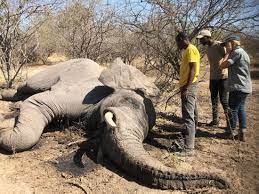In September 2020, geologist Jay Temple began living part-time at an RV park just outside Westcliffe, Colorado, a small high-altitude town. Located between two sets of mountains—the craggy Sangre de Cristos and the Wet Mountains—it is a geologist’s heaven.
In Custer County’s Wet Mountain Valley, Temple investigates old reports of mineral deposits and uses modern techniques to see how they hold up. It’s part of a United States Geological Survey program called Earth MRI—or Earth Mapping Resources Initiative—which aims to identify geological formations across the United States that could contain “critical minerals,” as defined by the Department of the Interior. Such minerals are useful to industry and defense for everything from cell phones to weapons. Because the minerals are often extracted overseas, they are also subject to supply-chain disruptions—from trade disputes, for example, or a pandemic.
Finding these minerals in domestic deposits could reduce U.S. dependence on foreign supplies. But these deposits aren’t always simple to find, in part because they aren’t limited to public lands. In Colorado, for instance, Temple has to access private property, asking landowners if he can use a device called a scintillometer to measure the radioactivity of mineral deposits and collect a small sample. “So far, I haven’t been shot,” he jokes, sitting at a picnic table at the local bowling alley.
Until June 2021, Temple says his sometimes delicate interactions were going well enough. So were those of other Colorado Geological Survey employees and contractors working on behalf of the USGS. But then the Earth MRI helicopter showed up, buzzing residents at 300 to 1,000 feet above the ground. The helicopter has what’s called a stinger mounted to its underside, which, along with other instruments, pings the ground below to map the geological characteristics.
The stinger resembles a small missile or a giant Q-tip, and to the uninitated, it can look intimidating. “When the helicopter survey came along,” says Temple, “that kind of shut a lot of doors.”
Residents began to talk and to post concerns online. The helicopter scared their horses, they said, and hurt their dogs’ ears. They speculated, Temple says, that it might be spying on cell phones, or siphoning up hard drives’ contents. Maybe it was seeking militia bunkers, they wondered, or beaming out a magnetic field. And what if the scientists really were looking for minerals—and found them? Would mining companies pollute the area, like other mines had before? Would the government take their land? Custer County is rural and relatively undeveloped, with a population of just over 5,000 people across 738 square miles.
Source : https://www.popsci.com/science/earth-mri-mining-west/








